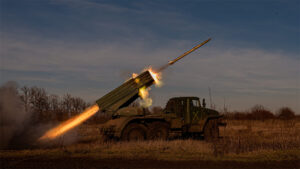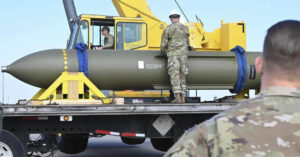This is the second in a series of newsletters addressing the state of the COVID-19 pandemic around the world. Other articles in the series cover Latin America, the Persian Gulf, East Asia, Europe, and the BRICS.
Let me bottom-line it: In the United States, the COVID epidemic is now the second-worst in the developed world and among the dozen worst globally. The epidemic will get considerably more intense in just the next few weeks. Red states and Blue states will experience almost identical epidemics. The situation will not noticeably improve until such time as we have a widely distributed vaccine program.
Now for the longer version:
In a country as geographically and demographically large as the United States, it should come as no surprise America’s coronavirus epidemic wasn’t the same everywhere. Functionally, the United States has experienced two epidemics.
The first was in the Northeast Corridor, America’s most densely populated footprint stretching from Washington DC in the south to Boston in the north. The epidemic hit hardest in the greater New York City region (aka the tri-state region). NYC is the United States’ densest population center, the region with the best inter- and intra-city transport infrastructure, as well as its heaviest international travel and transit locations – all factors which encouraged rampant COVID spread.
America’s second epidemic was…everywhere else. Outside of the Northeast Corridor, American cities are far apart and not well connected with transport infrastructure. When travelling around the country, most Americans use personal cars or passenger jets. When COVID started, airline use dropped by over 95% year-on-year and people largely stopped intra-city travel. As such the virus still spread, but at a slow smolder rather than a hot burn.
The difference explains much of the divergence among Americans as to how they view the virus. The Northeast Corridor got hit hard, and that heavily-urbanized corridor is among America’s most politically liberal regions. So the “Left” takes the virus pretty seriously.
In contrast, most of America’s wide-open spaces and smaller cities lean more politically conservative, with the less populous parts of the country tending in a decidedly populist direction. So many on the “Right” – and especially the populist right – wonder what’s the big deal?
(This is of course a generalization. There are spots of deep-Red rural Alabama the virus has absolutely devastated, while there are some urban centers – even in the Northeast – which have done pretty well. But overall, the generalization holds.)
Anywho, while policy responses are all over the map, America’s political split as regards COVID perceptions is not ideological. To a large degree, America’s Left and Right have experienced different epidemics. It is perfectly natural that their perceptions reflect that. Yet moving forward, we expect those perceptions to align.
America’s lockdowns were not nearly as all-inclusive as the rest of the world’s. In China, government-mandated fever-checkers were omnipresent; If you had a fever you were ripped away from your family until such time as you tested negative for the coronavirus — even if that took over a month. In contrast, consider Denver where I live: marijuana dispensaries were branded “essential businesses”. Pretty much all epidemiologists were very, very vocal about how if the goal was COVID eradication, we had to implement the lockdowns and build capacity to contain the outbreaks correctly the first time.
We didn’t.
The result? Outside of the Northeast Corridor, the United States never saw its caseloads drop. In most places a lengthy plateau was as good as it got. Only in the Northeast Corridor where America experienced its major outbreak – and so where quarantine procedures were taken more seriously – did cases decline substantially. Statistically speaking, the rapid caseload drops in the Northeast Corridor broadly cancelled out the slow-but-steady increases in the rest of the country. As a whole, America experienced a caseload plateau.
Now, in mid-June, the United States has reached an equalization point: caseloads per unit of population in the Corridor (which have been dropping) now roughly match the case levels in the rest of the country (which have been rising). With the exception of the very lightly populated states of the Rockies, the states now have very similar caseloads as a percentage of the population – regardless of their political leanings.

(Many, many thanks to the Financial Times for providing the data interface that makes this graphic possible. You can visualize your own data pulls here.)
Moving forward, both groups of states are about to experience similar caseload increases, largely due to an unrelated pair of epidemiological disasters.
The first such epidemiological disaster was Memorial Day. After the country was cooped up for two months, people wanted out, and the three-day Memorial Day weekend enabled folks to cut loose. Mass parties was the unsurprising result. (Maybe we all should have seen this coming?) The biggest parties with the least social distancing occurred in those states where caseloads weren’t huge – primarily in America’s politically conservative regions. Missourians were particularly aggressive at drowning their frustrations in drinks.
The second epidemiological disaster is the ongoing series of protests against police brutality and racial inequality. Regardless of what one thinks of the righteousness or lack thereof of the Black Lives Matter movement in general or the individual protestors in specific, the simple fact remains that large groups of people in limited spaces are excellent for the transmission of a respiratory virus. And that’s before considering issues like mass arrests that cram people into paddy wagons and jail cells, much less the use of tear gas and pepper spray which makes people cough and gasp and therefore be more likely to expel and inhale viruses. The larger, denser protests have been in America’s major cities, most of which tilt decidedly Left.
Take a look at this excellent graphic from Count Love. They’ve collected thousands of local media reports and made this map highlighting the major protest sites. Anywhere there’s a circle – especially a larger circle – we should except to see surges in coronavirus cases.

That just leaves two questions: how soon will we see the surges, and how big will they be?
We know from case studies around the country and around the world that from the point in time of mass spreading events, we can expect to see significant surges in caseloads in three to five weeks. Memorial Day was May 25. The protests have occupied the first two weeks of June. We should expect to detect mass outbreaks across the country in both Red and Blue states in late-June and especially in July.
As to size, consider the case of Austin, Texas – home of our headquarters. Just two weeks after Memorial Day, Austin has already seen caseloads double. That’s before the protests have had a chance to add their own fuel to the fire.
America’s quarantine efforts were insufficient to root out coronavirus, likely making it endemic to the population. That was before the Memorial Day parties and protest movements. Purging the virus is now not only an impossibility, the United States is now on track to experience the worst documented infection rates in the world (many countries have worse testing regimes, so labeling the US #1 without a caveat is a bit disingenuous). About the only silver lining is that vaccine development efforts continue to outperform. We are highly likely to have a functional vaccine this year. That still leaves questions of mass manufacturing and distribution, but even in the worst-case scenario, that process will likely require under a year.
In the meantime, regardless of differences in race and socioeconomic status and ideology and geography, Americans are about to find themselves in the same boat. It isn’t the sort of unifying experience we at ZoG tend to hope for, but it is a unifying experience nonetheless.
The United States is hardly the only place that has gotten its COVID response wrong. Mexico — the United States’ top economic, cultural, political and security partner — unfortunately falls into the same bucket. That’s part of why our next video conference — this coming Tuesday, June 16 – will address all things Mexican, from the status of the drug war to the coronavirus impact to American-Mexican relations. Scheduling and sign up information can be found here.
Newsletters from Zeihan on Geopolitics have always been and always will be free of charge. However, if you enjoy them or find them useful, please consider showing your appreciation via a donation to Feeding America. One of the biggest problems the United States faces at present is food dislocation: pre-COVID, nearly 40% of all foods were not consumed at home. Instead they were destined for places like restaurants and college dorms. Shifting the supply chain to grocery stores takes time and money, but people need food now. Some 23 million students used to be on school lunches, for example. That servicing has evaporated. Feeding America helps bridge the gap between America’s food supply (which remains robust) and its demand (which coronavirus has shifted faster than the supply chains can keep up).
A little goes a very long way. For a single dollar, FA can feed one person for three days.








